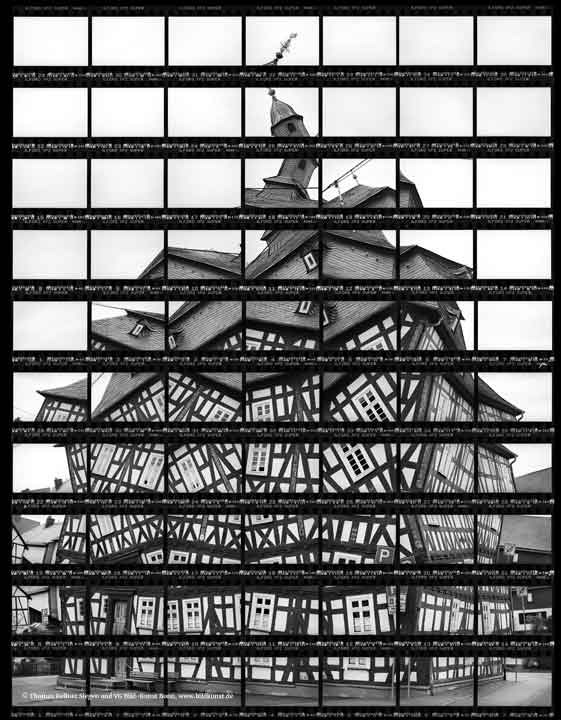Chapel school Rehe
Rehe is a village in the Rennerod Township located in the Westerwald. It had a chapel as early as the 14th century that burned down in 1570. As a result, the community built the first chapel school to educate its pupils and for prayer.
In June 1741, a new village chapel school was con-structed. The chapel was located on the upper floor of the new building while school lessons were held on the lower floor. The half-timbered building was in use for educational purposes until 1924. Nowadays, the former chapel school serves as the Rehe village office and still characterizes the appearance of the community.
Rehe in: The Chapel Schools' Book
Chapel schools form a solitary architectural type for the Siegerland and its neighboring regions.
As stand-alone buildings and conspicuous in their surroundings, like the one in Rehe, they reveal the connection between religion and school education starting from the domain of Count William I of Nassau-Katzenelnbogen (1487-1559) and his son John VI of Nassau, Katzenelnbogen and Dietz (1536-1606). The hybrid used buildings existed until the end of the 19th century and in parts even until the 20th century.
Chapel Schools a solitary architectural type
The Siegen fine art photographer Thomas Kellner recognized the historical and cultural value of these buildings and set himself the task of preserving and recalling this typical regional cultural asset through a new medium. By means of photography he transfers the chapel schools into an artistic context and gives the historical topic a new dimension in the present (art).
Just as the chapel schools united in themselves two spheres of life, this publication also conveys different contemporary perspectives on the history and genesis of the chapel schools. While Kellner tries to rethink the type of building, which oscillates between profane and sacred, with his artistic realization, Chiara Manon Bohn, Isabell Eberling M. Sc. Dr. Andrea Gnam and Dr. Stefanie Siedek-Strunk provide an insight into the historical, architectural and religious classification of the chapel schools up to the pictures of Thomas Kellner in text contributions.











